-
 Bitcoin
Bitcoin $105,854.2138
1.35% -
 Ethereum
Ethereum $2,520.4396
1.18% -
 Tether USDt
Tether USDt $1.0006
-0.01% -
 XRP
XRP $2.1816
0.36% -
 BNB
BNB $653.4391
1.15% -
 Solana
Solana $151.0436
1.09% -
 USDC
USDC $0.9998
-0.01% -
 Dogecoin
Dogecoin $0.1847
2.87% -
 TRON
TRON $0.2843
2.60% -
 Cardano
Cardano $0.6668
0.77% -
 Hyperliquid
Hyperliquid $34.6557
2.56% -
 Sui
Sui $3.2357
1.95% -
 Chainlink
Chainlink $13.7885
1.85% -
 Avalanche
Avalanche $20.8377
7.01% -
 UNUS SED LEO
UNUS SED LEO $9.1530
2.33% -
 Stellar
Stellar $0.2650
0.51% -
 Bitcoin Cash
Bitcoin Cash $406.9303
2.72% -
 Toncoin
Toncoin $3.1966
1.70% -
 Shiba Inu
Shiba Inu $0.0...01272
2.36% -
 Hedera
Hedera $0.1692
2.57% -
 Litecoin
Litecoin $88.3548
1.11% -
 Polkadot
Polkadot $4.0327
3.72% -
 Monero
Monero $327.7699
1.43% -
 Ethena USDe
Ethena USDe $1.0013
-0.01% -
 Bitget Token
Bitget Token $4.6646
1.47% -
 Dai
Dai $0.9999
-0.01% -
 Pepe
Pepe $0.0...01151
3.94% -
 Pi
Pi $0.6446
4.05% -
 Uniswap
Uniswap $6.3375
4.99% -
 Aave
Aave $258.0587
2.08%
How to operate when the moving average bullish arrangement appears? What are the callback support signals?
When a moving average bullish arrangement signals an upward trend in crypto, traders can enter long positions and use callback support signals to optimize their strategy.
Jun 07, 2025 at 10:50 am
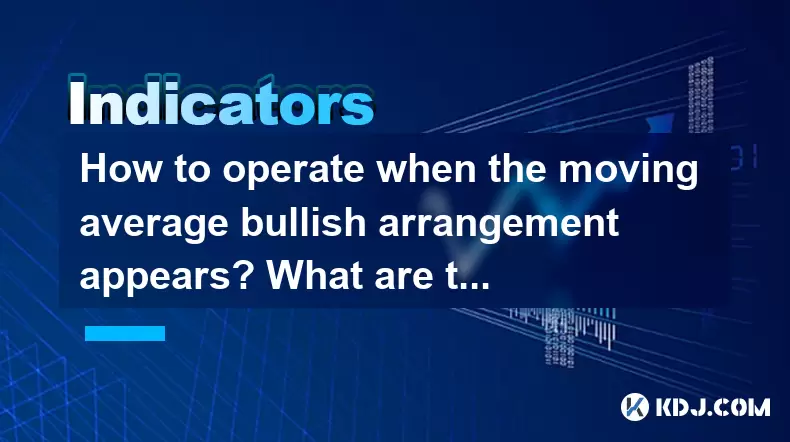
When the moving average bullish arrangement appears in the cryptocurrency market, it signals a potential upward trend, which traders can leverage to make informed decisions. This article will delve into the specifics of operating during such a scenario and identifying callback support signals to enhance your trading strategy.
Understanding the Moving Average Bullish Arrangement
The moving average bullish arrangement occurs when shorter-term moving averages cross above longer-term moving averages. This setup is often seen as a confirmation of a bullish trend. For example, if the 50-day moving average crosses above the 200-day moving average, it is known as a "golden cross," a strong bullish signal.
To identify this arrangement, you should:
- Plot multiple moving averages on your chart, typically using the 50-day, 100-day, and 200-day moving averages.
- Observe the crossover of the shorter-term moving average above the longer-term moving average.
- Confirm the trend by ensuring that the price action remains above these moving averages.
Operating During a Bullish Arrangement
When you identify a moving average bullish arrangement, it's crucial to have a solid trading strategy. Here are the steps to follow:
- Enter the market: Consider entering a long position when the bullish arrangement is confirmed. This can be done by buying the cryptocurrency at the current market price.
- Set stop-loss orders: To manage risk, place a stop-loss order below the most recent support level or the lowest point of the moving average crossover.
- Monitor the trend: Keep an eye on the price action and moving averages. If the price remains above the moving averages, it suggests the bullish trend is intact.
- Adjust positions: As the price moves higher, you may want to adjust your stop-loss to lock in profits and reduce risk.
Identifying Callback Support Signals
Callback support signals are crucial for understanding potential entry and exit points during a bullish trend. These signals indicate that the price may temporarily retreat before continuing its upward trajectory. Key callback support signals include:
- Retracement to moving averages: When the price pulls back to the moving averages, particularly the 50-day moving average, it often acts as a support level where buyers may step in.
- Volume spikes: An increase in trading volume during a callback can indicate strong buying interest, suggesting that the pullback is temporary.
- Candlestick patterns: Bullish candlestick patterns such as hammers or engulfing patterns at support levels can signal a potential reversal back to the bullish trend.
Trading Strategies for Callback Support
When a callback support signal appears, you can employ the following strategies:
- Buy on dips: If the price pulls back to a moving average or a significant support level, consider buying the dip as it may offer a better entry point.
- Use technical indicators: Combine moving averages with other technical indicators like the Relative Strength Index (RSI) or the Moving Average Convergence Divergence (MACD) to confirm the strength of the support level.
- Set new stop-losses: Adjust your stop-loss orders to just below the new support level to protect your position from potential breakdowns.
Managing Risk During Bullish Arrangements
Managing risk is paramount when trading during a bullish arrangement. Here are some tips to help you mitigate potential losses:
- Diversify your portfolio: Don't put all your capital into one cryptocurrency. Spread your investments across different assets to reduce risk.
- Use proper position sizing: Determine the size of your positions based on your risk tolerance and the volatility of the cryptocurrency.
- Stay informed: Keep up with market news and events that could impact the price of the cryptocurrency you are trading.
Utilizing Technical Analysis Tools
Technical analysis tools can enhance your ability to trade effectively during a moving average bullish arrangement. Some useful tools include:
- Fibonacci retracement levels: These can help identify potential support levels during callbacks.
- Trend lines: Drawing trend lines can help you visualize the overall direction of the trend and identify potential breakout or breakdown points.
- Oscillators: Tools like the RSI and MACD can provide additional confirmation of the strength of the trend and potential reversal points.
Frequently Asked Questions
Q1: Can the moving average bullish arrangement be used for short-term trading?
Yes, the moving average bullish arrangement can be used for short-term trading. Traders can focus on shorter-term moving averages, such as the 10-day and 20-day moving averages, to identify quicker entry and exit points. However, short-term trading involves higher risk and requires close monitoring of the market.
Q2: How reliable are callback support signals in predicting price movements?
Callback support signals can be reliable, but they are not foolproof. The reliability depends on various factors, including the overall market sentiment, the strength of the bullish trend, and the volume of trading at support levels. It's essential to use these signals in conjunction with other technical indicators and market analysis to increase their accuracy.
Q3: What should I do if the price breaks below the moving averages during a bullish arrangement?
If the price breaks below the moving averages during a bullish arrangement, it could signal a potential trend reversal. In this case, you should:
- Reassess your position: Consider whether the bullish trend is still intact or if it's time to exit your position.
- Adjust your stop-loss: Move your stop-loss closer to the current price to minimize potential losses.
- Look for new signals: Wait for new bullish signals before re-entering the market.
Q4: How can I differentiate between a temporary callback and a trend reversal?
Differentiating between a temporary callback and a trend reversal can be challenging but is crucial for effective trading. Look for the following signs:
- Duration of the pullback: Temporary callbacks are usually short-lived, while trend reversals may show prolonged price declines.
- Volume: A temporary callback might see a spike in volume as buyers step in, whereas a trend reversal may be accompanied by sustained high volume on the downside.
- Moving averages: If the price quickly rebounds to above the moving averages, it's likely a callback. If it remains below the moving averages for an extended period, it could indicate a trend reversal.
Disclaimer:info@kdj.com
The information provided is not trading advice. kdj.com does not assume any responsibility for any investments made based on the information provided in this article. Cryptocurrencies are highly volatile and it is highly recommended that you invest with caution after thorough research!
If you believe that the content used on this website infringes your copyright, please contact us immediately (info@kdj.com) and we will delete it promptly.
- Chainlink (LINK) Quietly Accumulates $36M Ahead of Potential Breakout: Is a Rally Brewing?
- 2025-06-08 05:35:15
- PEPE Price Gains, Stellar Eyes Breakout, While BlockDAG's $0.0019 Limited-Time Offer Ranks It the Top Crypto to Buy Right Now
- 2025-06-08 05:35:15
- Could It Finally Be Time for Ethereum to Rally? Several Prominent Analysts Now Believe That Is the Case
- 2025-06-08 05:30:12
- Coinbase Global COIN is set to report first-quarter 2025 results on May 8
- 2025-06-08 05:30:12
- Solana's (SOL) Stablecoin Market Cap Soars 156% in 2025, to Hit a New Record at $12 Billion
- 2025-06-08 05:25:29
- Kalshi Drops Its Appeal Against the CFTC, Finally Clearing the Way for the Platform to Offer Political Event Contracts
- 2025-06-08 05:25:29
Related knowledge
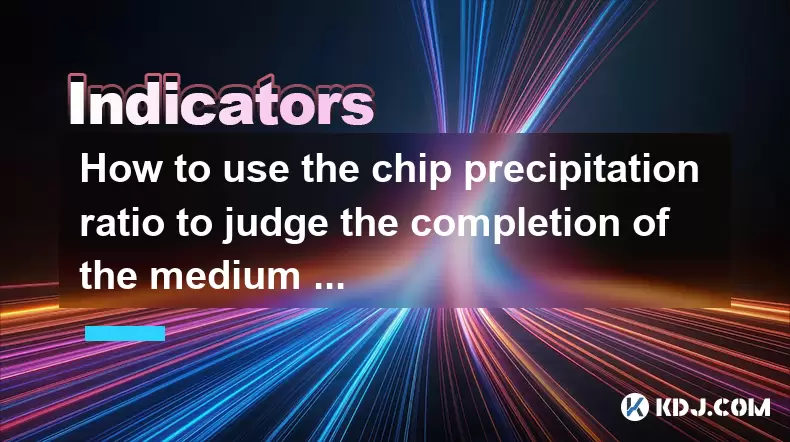
How to use the chip precipitation ratio to judge the completion of the medium and long-term bottom construction?
Jun 04,2025 at 03:36am
The chip precipitation ratio is a crucial metric used by investors to assess the accumulation of chips (or shares) at different price levels over time. This ratio helps in understanding the distribution of chips and can be a powerful tool for determining the completion of medium and long-term bottom construction in the cryptocurrency market. By analyzin...
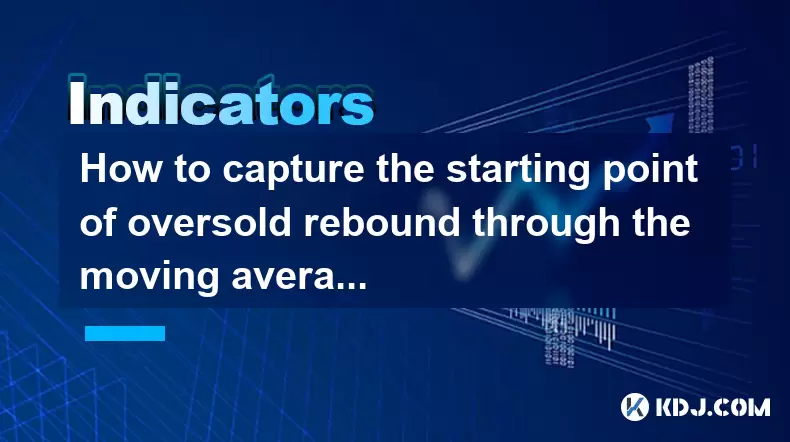
How to capture the starting point of oversold rebound through the moving average gravity reversal strategy?
Jun 04,2025 at 01:01pm
The moving average gravity reversal strategy is a sophisticated approach used by traders to identify potential entry points for buying cryptocurrencies when they are considered oversold. This strategy leverages the concept of moving averages to pinpoint moments when a cryptocurrency might be poised for a rebound. In this article, we will delve into the ...
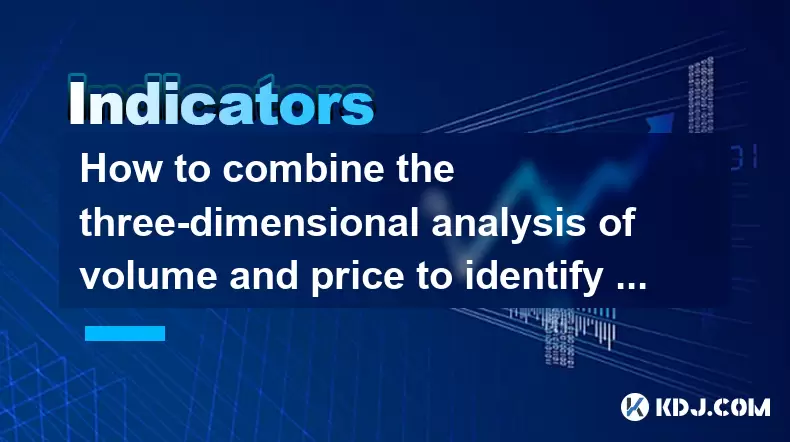
How to combine the three-dimensional analysis of volume and price to identify the golden buying point of breakthrough and retracement?
Jun 03,2025 at 11:42pm
In the dynamic world of cryptocurrencies, identifying the optimal buying points is crucial for maximizing profits and minimizing risks. One effective method to achieve this is by combining three-dimensional analysis of volume and price to pinpoint the golden buying points during breakouts and retracements. This article will delve into how to use this ap...
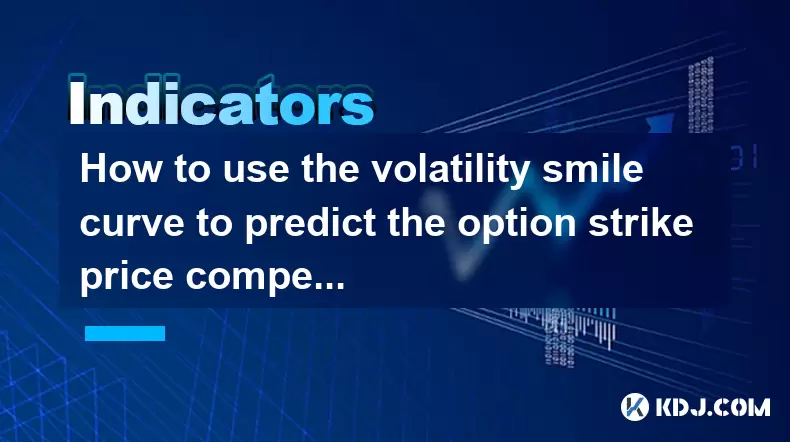
How to use the volatility smile curve to predict the option strike price competition area?
Jun 06,2025 at 01:01pm
The volatility smile curve is a graphical representation that shows the implied volatility of options across different strike prices for a given expiration date. It is called a 'smile' because the curve often takes the shape of a smile, with higher implied volatilities for options that are deep in-the-money or deep out-of-the-money, and lower implied vo...
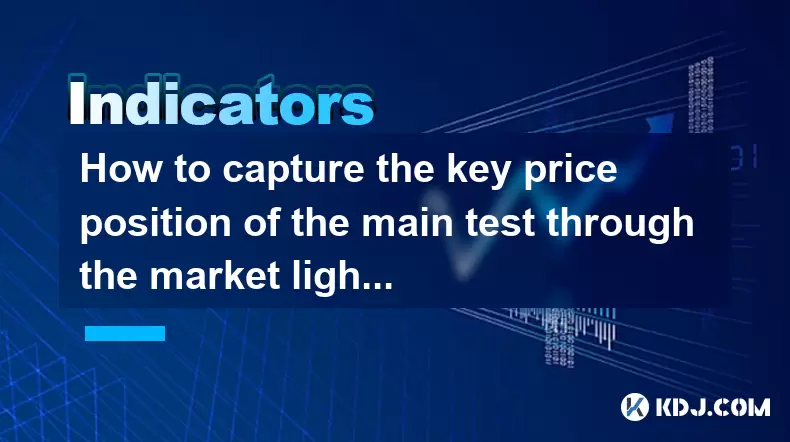
How to capture the key price position of the main test through the market lightning chart?
Jun 02,2025 at 06:07pm
Introduction to Market Lightning ChartThe market lightning chart is a powerful tool used by cryptocurrency traders to visualize price movements and identify key price positions. This chart type provides a detailed view of market activity, allowing traders to spot trends, reversals, and other significant price levels quickly. By understanding how to use ...
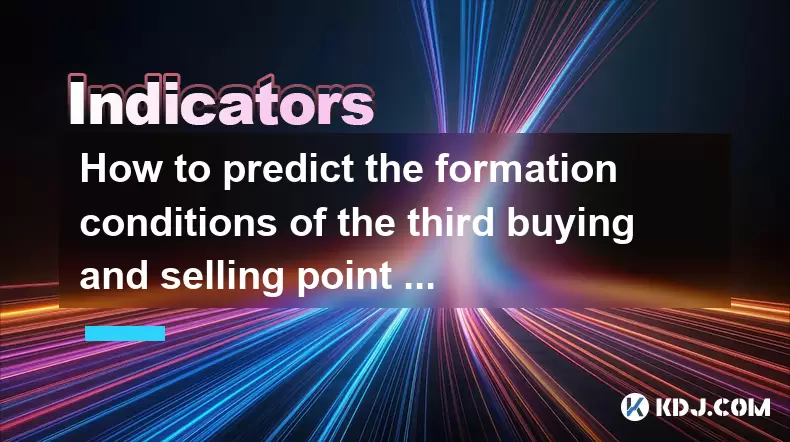
How to predict the formation conditions of the third buying and selling point in combination with the extension of the central axis of the Chaos Theory?
Jun 08,2025 at 12:42am
The concept of predicting the formation conditions of the third buying and selling point in the cryptocurrency market by combining the extension of the central axis of the Chaos Theory is an advanced analytical technique. This method involves understanding the chaotic nature of price movements and using it to identify key moments for trading. In this ar...

How to use the chip precipitation ratio to judge the completion of the medium and long-term bottom construction?
Jun 04,2025 at 03:36am
The chip precipitation ratio is a crucial metric used by investors to assess the accumulation of chips (or shares) at different price levels over time. This ratio helps in understanding the distribution of chips and can be a powerful tool for determining the completion of medium and long-term bottom construction in the cryptocurrency market. By analyzin...

How to capture the starting point of oversold rebound through the moving average gravity reversal strategy?
Jun 04,2025 at 01:01pm
The moving average gravity reversal strategy is a sophisticated approach used by traders to identify potential entry points for buying cryptocurrencies when they are considered oversold. This strategy leverages the concept of moving averages to pinpoint moments when a cryptocurrency might be poised for a rebound. In this article, we will delve into the ...

How to combine the three-dimensional analysis of volume and price to identify the golden buying point of breakthrough and retracement?
Jun 03,2025 at 11:42pm
In the dynamic world of cryptocurrencies, identifying the optimal buying points is crucial for maximizing profits and minimizing risks. One effective method to achieve this is by combining three-dimensional analysis of volume and price to pinpoint the golden buying points during breakouts and retracements. This article will delve into how to use this ap...

How to use the volatility smile curve to predict the option strike price competition area?
Jun 06,2025 at 01:01pm
The volatility smile curve is a graphical representation that shows the implied volatility of options across different strike prices for a given expiration date. It is called a 'smile' because the curve often takes the shape of a smile, with higher implied volatilities for options that are deep in-the-money or deep out-of-the-money, and lower implied vo...

How to capture the key price position of the main test through the market lightning chart?
Jun 02,2025 at 06:07pm
Introduction to Market Lightning ChartThe market lightning chart is a powerful tool used by cryptocurrency traders to visualize price movements and identify key price positions. This chart type provides a detailed view of market activity, allowing traders to spot trends, reversals, and other significant price levels quickly. By understanding how to use ...

How to predict the formation conditions of the third buying and selling point in combination with the extension of the central axis of the Chaos Theory?
Jun 08,2025 at 12:42am
The concept of predicting the formation conditions of the third buying and selling point in the cryptocurrency market by combining the extension of the central axis of the Chaos Theory is an advanced analytical technique. This method involves understanding the chaotic nature of price movements and using it to identify key moments for trading. In this ar...
See all articles

























































































